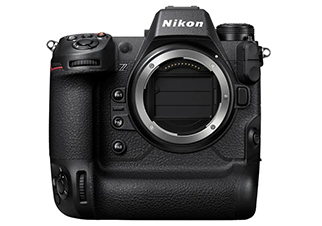Nikon yesterday introduced its latest flagship mirrorless camera, the Z9 for a whopping price of Rs 4,75,995. The camera is the first of its kind which doesn’t feature a mechanical shutter and only features an Electronic Shutter making it the fastest CMOS sensor produced and also that it will have the least amount of rolling shutter due to this feature.
The camera features a 45.7-megapixel sensor and has the capability to shoot 8K video at 30p and up to 20 fps RAW burst shooting capabilities. It’s Nikon’s first camera with a stacked sensor and built-in memory, allowing for extremely rapid readout speeds. Nikon is so confident in the electronic shutter that it has abandoned the mechanical shutter altogether, making the Z9 the first high-end professional camera to do so.
The Z9 sensor (which has the same megapixel count as the Z7 II) enables for flash sync speeds of up to 1/200th of a second, which appears to be the quickest sync speed for an electronic shutter ever. This should also make it particularly resistant to rolling shutter, which is important if the camera is going to be used for sports or action photography. The quicker sensor enables JPEG burst photography at up to 30 frames per second or RAW shots at 20 frames per second. If you’re ready to go down to 11 megapixels, you can capture photographs at 120 fps as well. The Nikon Z, like other stacked sensor cameras, features substantially better buffering, allowing you to shoot up to 1,000 frames at once with JPEG or the new HE (high efficiency) RAW compression techniques.
Nikon’s autofocus (AF) technology is likewise all new, and it makes even greater use of AI algorithms. Like the Canon’s EOS R3, can now monitor a wide range of subjects, including people’s eyes, faces, and bodies, as well as dogs, cats, and birds, aircraft, trains, motorcycles, and bicycles. And, unlike other AI cameras, there’s no need to tell it what you’re shooting – if you set it to “Auto,” the camera will figure it out (or, you can set the subject type manually). It also has a “3D tracking” feature, similar to that found in Nikon DSLRs.
Nikon’s in-body stabilization mechanism has also been upgraded (which it calls “vibration reduction” or VR). It can now combine in-body and lens stabilization systems for more stable video and less blurry images. However, it will only be available with a few lenses at first, including the Nikkor Z 70-200mm F/2.8, Z MC 105mm F/2.8 VR, and the recently announced Z 100-400mm F/4.5-5.6 VR S.
As Nikon hinted earlier this year, video performance is similarly outstanding. The Z9 will be able to capture 8K at 30p, as well as oversampled 4K 30p from an 8K clip, which should be extremely crisp. It will also be capable of capturing 4K at up to 120 fps if you don’t mind pixel binning or line skipping. To begin, you’ll be able to capture these files at up to 10-bit resolution using H.264 or H.265 long GOP codecs. Furthermore, Nikon provides the extremely handy option of shooting video using ProRes 422 HQ compression, which is considerably easier to edit right out of the camera.
However, things will become much more fascinating later on. Nikon intends to provide a firmware upgrade in the future that will enable 12-bit 8K 60fps capture in a new, proprietary N-RAW format or Apple ProRes RAW HQ capture at 4K/60p. Nikon claims that at “average” conditions, you’ll be able to capture the oversampled 4K/30p for more than two hours.
The camera features two CFexpress Type B slots (backward compatible with XQD) for maximum video and burst photo capabilities. The new EN-EL18d battery has a capacity of 740 shots per charge with the LCD and 700 shots with the EVF activated. It boasts a 3.69 million dot OLED viewfinder, which probably could’ve been better considering that most cameras now already have this since a longtime. The refresh rate of the EVF is just 60 fps, but Nikon claims that it always provides that speed and never downgrades it regardless of what you’re doing. It has a multi-direction back LCD rather than a completely articulating screen, although it can be tilted up to face you.

